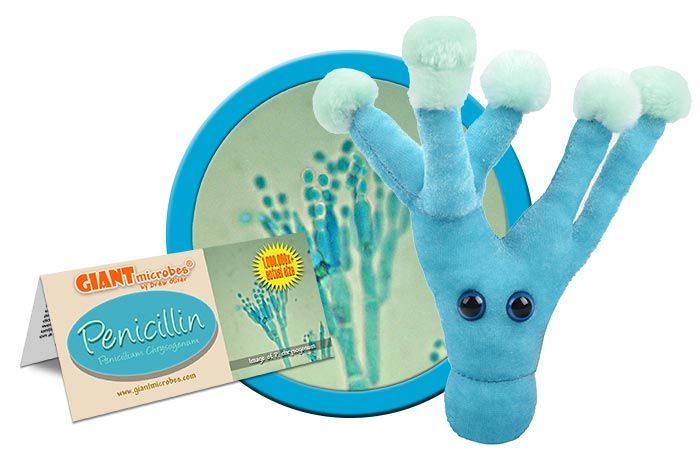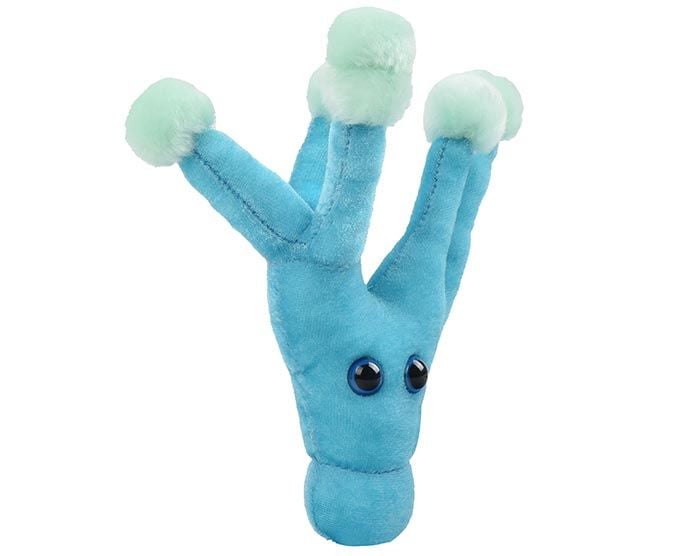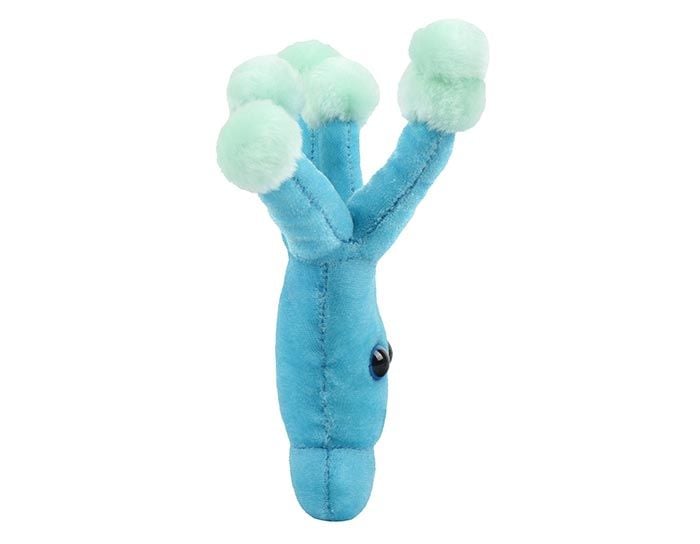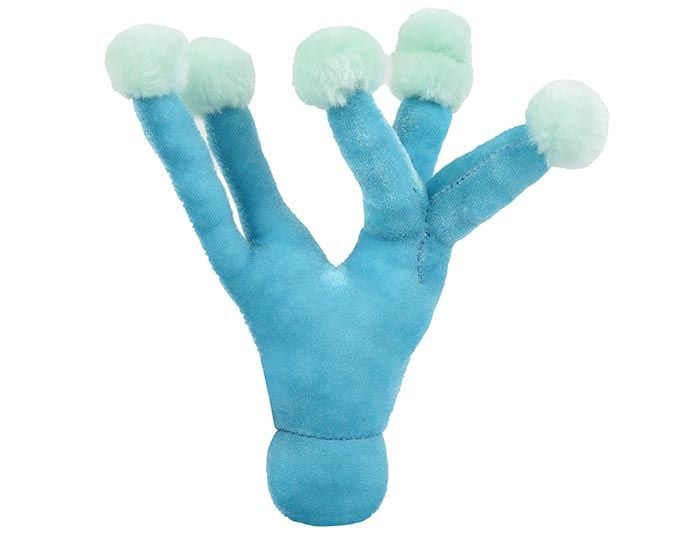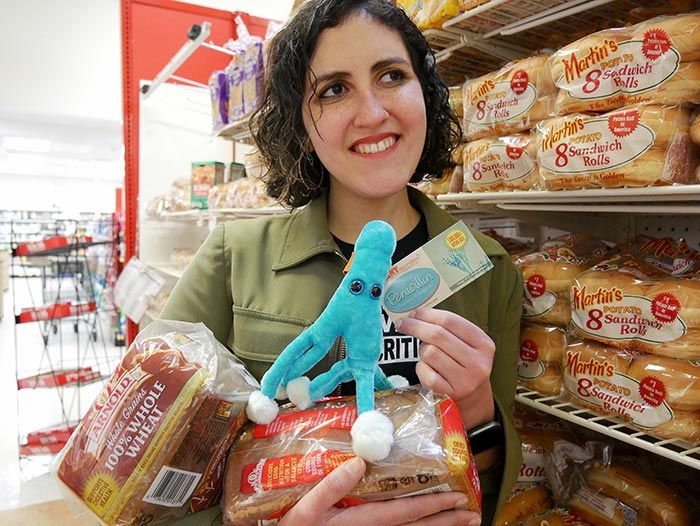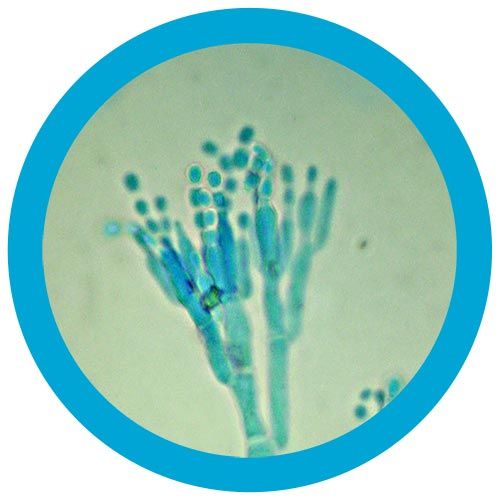Penicillin (Penicillium chrysogenum)
Meet the little blue fungus that changed the world. This medical miracle is perfect for anyone who is under the weather! This adorable plush representation of Penicillin provides a fun hands-on-way to learn about health, biology, antibiotics and how they fight harmful bacteria.
This memorable and unique get well gift will bring joy to friends and loved ones, and a fun learning gift for students, scientists, educators, doctors, nurses and anyone with a healthy sense of humor. Features detailed stitching and includes an educational printed card with fascinating facts about this very helpful microbe.
Size: 8 x 5 x 2”
Product Details
Additional Information
| Sizes | Giantmicrobes are based on actual microbes, cells, organisms and other critters, only 1,000,000 times actual size! Gigantic (GG) 16-24" XL (XL) 10-15" Original (PD) 5-8" Keychain (KC) 2-4" with clip |
|---|---|
| Materials | Plush from all new materials. Stuffed with polyester fiber fill. Surface washable: sponge with water & soap, air dry. |
| Packaging | Each plush microbe includes a printed card with fun, educational and fascinating facts about the actual microbe or cell. |
| Safety | Every product meets or exceeds U.S. and European standards for safety. For ages 3 and up. |
All about Penicillin (Penicillium chrysogenum)
FACTS: Technically, all that penicillin does is to inhibit the enzyme transpeptidase in gram-positive bacteria preventing the crosslinking of the peptidoglycan polymers and impairing the generation of cellular walls. But that is enough to change the world!
It is commonly known that Scottish scientist Alexander Fleming discovered the antibacterial effects of Penicillium (from the Latin for paintbrush, Penicillium the mold produces penicillin the antibiotic agent) in 1928. He returned to his lab after a long-weekend and noticed that the growth of Staphylococcus aureus bacteria in a petri dish he had forgotten to clean was constrained.
What is less well known is that Penicillium’s special aptitudes had been noticed by a French medical student named Ernest Duchesne in the late 1890’s – and indeed, that the properties of molds had attracted the attentions of a number of scientists in the proceeding decades. In fact, the ancient Egyptians and Chinese rubbed moldy breads and soybean curbs on skin infections thousands of years ago!
Fleming was never able to isolate the penicillin agent, and it was not until World War II, when the hope of treating injured soldiers spurred antibiotic research, that Howard Florey and Ernst Chain managed to do so. However, not all strains of Penicillium produce penicillin equally well (or at all). Commercial production of the miracle drug was limited until an exceptionally productive strain of Penicillium was discovered on a moldy cantaloupe melon from a market in Peoria, Illinois.
| Description | This microbe is the source of penicillin, the first antibiotic, which work against many harmful bacteria. However, about ten percent of people may be allergic. |
|---|
| Name | Penicillus is the Latin word for paintbrush and it describes the paintbrush resemblance of this fungi’s morphology. |
|---|
| Where It Lives | Penicillium chrysogenum is a type of mold found naturally in the environment. It’s typically found in the soil, on decaying plants, and rotting fruit. This mold is related to several blue molds that are used to make delicious, stinky cheeses like blue, gorgonzola, and Roquefort cheeses! |
|---|
| History | Penicillin was discovered by Scottish microbiologist, Sir Alexander Fleming, in 1928 when he inadvertently left his bacterial cultures out on the lab bench and mold had begun to grow on it. He noticed that bacteria failed to grow where the mold grew. The discovery of penicillin is considered one of the greatest advancements in medical history! During World War II, it saved the lives of millions of wounded soldiers, and became known as the miracle drug. |
|---|
| Fascinating Facts | Today, antibiotics are so widely used in medical treatment and food production that many bacteria have become resistant to their effects, including penicillin. These resistant microbes pose a serious threat to humans because they don’t respond to the usual treatment methods. |
|---|


